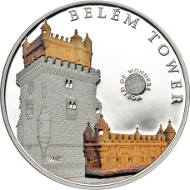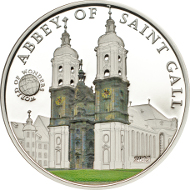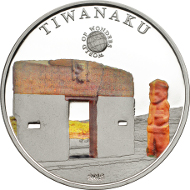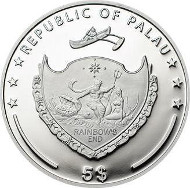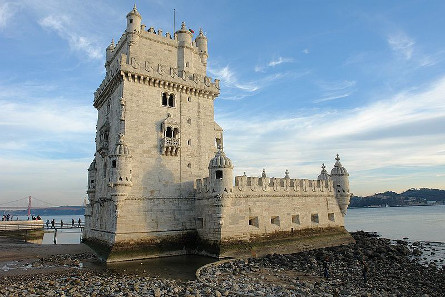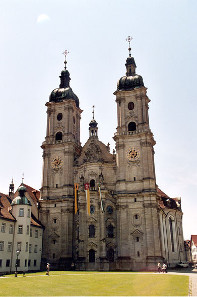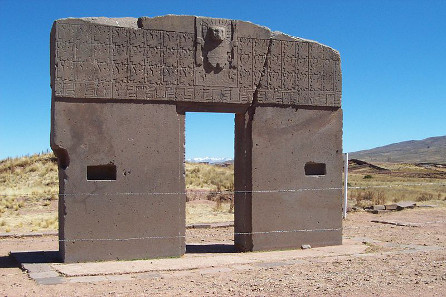September 17, 2015 – Europe, Africa, America – the new coins in the “World of Wonders” series are truly intercontinental. With the same colourful splendour as always, Coin Invest Trust pays tribute to four monuments, which bear witness to foregone eras and advanced civilizations, in numismatic form.
Palau / 5 Dollars / Silver .925 / 20 g / 38.61 mm / Mintage: 2,500.
The obverse of all coins depicts the coat of arms of the issuing state Palau as well as a canoeist in an outrigger canoe. Above, the name of the country, REPUBLIC OF PALAU, below, the nominal value, 5 $. All coins’ reverses are designed the same way: below the logo of the WORLD OF WONDERS series, they show a building (in color) that is named at the edge of the coin: BELÉM TOWER, ABBEY OF SAINT GALL, TIWANAKU, and DOUGGA. The year of issue, 2015, is stated at the lower edge or in the foreground of the building, respectively.
One of Lisbon’s most popular sights of interest: the Belém Tower. Photograph: Osvaldo Gago / https://creativecommons.org/licenses/by-sa/3.0/deed.en
Lighthouse and armoury, prison and fortification – in its long and eventful history, the Torre de Bélem was all that. Built by order of King Manuel I and finished in 1521, the building even survived the devastating earthquake of 1755 and today remains one of the city’s most imposing landmarks. The majestic Manueline style monument of the former seafaring nation Portugal attracts countless tourists.
Abbey of St. Gall in Switzerland. Photograph: Roland Zumbühl / https://creativecommons.org/licenses/by-sa/3.0/deed.en
While Lisbon’s destruction in 1755 provoked worldwide debates about the existence of a benevolent God, the people in St. Gall decided to replace their derelict abbatial church from the 9th century with a new baroque-style building. Completed in 1766, the new building with its distinctive twin towers served as the church of the abbey until 1805. Together with the abbey’s library and archives, it has been a UNESCO World Heritage Site since 1983.
The “Gateway of the Sun” in present-day Bolivia. Photograph: Mhwater.
10,000 km further to the West, in Bolivia, you come across Tiwanaku, an archaeological site whose name literally means “Kneel down, little Lama”. 4,000 m above sea level, the city in the La Paz region was the centre of a powerful empire long before the Incas arrived on the scene. Only a fraction of the vast area has been explored to date, but even at this early stage excavation finds point to a culture with its heyday between 300 BC and AD 1000.
Visitors from throughout the world come to Tunisia, to see the ruins of Dougga with their own eyes. Photograph: Bernard Gagnon / https://creativecommons.org/licenses/by-sa/3.0/deed.en
Dougga, an impressive excavation site in Tunisia, is of equal historical importance. It is first mentioned in 307 BC. As an ally of Carthage, Dougga became entangled in the conflict with Rome whose power was ever growing. After the decline of Carthage, Dougga became part of the Roman Empire and flourished in the 2nd and 3rd century AD. Temples, theatres, and baths, modelled on the Roman example, can all be found in Dougga on a slightly smaller scale.
The four coins make a beautiful addition to the existing almost 50 issues of the popular “World of Wonders” series, in which Coin Invest Trust transforms some of the most beautiful world heritage sites into coin images for the Micronesian island state Palau.
More information on these and other coins created by CIT are available on the website of Coin Invest Trust.
Buildings classified as world heritage can be found at the UNESCO list.
For impressions of the Torre de Belém, please watch this short movie on YouTube.
Please listen to the widely famous baroque bells of the Abbey of St. Gall here.
Many exciting historical facts about Tiwakanu are gathered here.
And you probably cannot wait to travel to Tunisia yourself after watching this short UNESCO film about Dougga.





